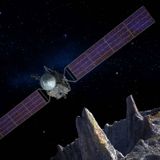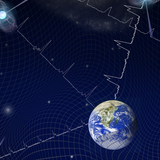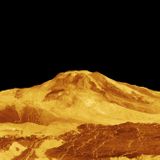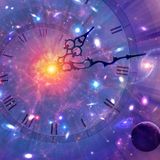RECENT ARTICLES

The Psyche Mission: Visiting a metal asteroid
Space is supported by its audience. When you purchase through links on our site, we may earn an affiliate commission. .Psyche is a NASA mission expected to launch in 2022 that will explore a 140-mile-wide (225 kilometers) metallic asteroid called 16 Psyche. No spacecraft has ever visited an object like 16 Psyche, which is thought to be the exposed core of a demolished planet. The mission is expected to provide important insights into planetary formation. Along with a mission called that will visit primordial asteroids near Jupiter, Psyche was in January 2017 as part of NASA's Discovery...…Space is supported by its audience. When you purchase through links on our site, we may earn an affiliate commission. .Psyche is a NASA mission expected to launch in 2022 that will explore a 140-mile-wide (225 kilometers) metallic asteroid called 16 Psyche. No spacecraft has ever visited an object like 16 Psyche, which is thought to be the exposed core of a demolished planet. The mission is expected to provide important insights into planetary formation. Along with a mission called that will visit primordial asteroids near Jupiter, Psyche was in January 2017 as part of NASA's Discovery...WW…

We should study 'dead' alien worlds, and maybe (carefully) seed them with life
Live Science is supported by its audience. When you purchase through links on our site, we may earn an affiliate commission. .The search for life in the universe tends to focus on habitable environments. But to answer questions about how life emerged and spread, as well as the limits of habitability, researchers may want to consider looking at dead worlds — and perhaps even (very carefully) seeding them with life. "The biological study of lifelessness seems counterintuitive, because biology is the study of life," said astrobiologist Charles Cockell of the University of Edinburgh in the...…Live Science is supported by its audience. When you purchase through links on our site, we may earn an affiliate commission. .The search for life in the universe tends to focus on habitable environments. But to answer questions about how life emerged and spread, as well as the limits of habitability, researchers may want to consider looking at dead worlds — and perhaps even (very carefully) seeding them with life. "The biological study of lifelessness seems counterintuitive, because biology is the study of life," said astrobiologist Charles Cockell of the University of Edinburgh in the...WW…

Galaxy-Size Gravitational-Wave Detector Hints at Exotic Physics
The fabric of spacetime may be frothing with gigantic gravitational waves, and the possibility has sent physicists into a tizzy. A potential signal seen in the light from dead stellar cores known as pulsars has driven a flurry of theoretical papers speculating about exotic explanations.The most mundane, yet still quite sensational, possibility is that researchers working with the North American Nanohertz Observatory for Gravitational Waves (NANOGrav), which uses the galaxy as a colossal gravitational-wave detector, have finally seen a long-sought background signature produced when...…The fabric of spacetime may be frothing with gigantic gravitational waves, and the possibility has sent physicists into a tizzy. A potential signal seen in the light from dead stellar cores known as pulsars has driven a flurry of theoretical papers speculating about exotic explanations.The most mundane, yet still quite sensational, possibility is that researchers working with the North American Nanohertz Observatory for Gravitational Waves (NANOGrav), which uses the galaxy as a colossal gravitational-wave detector, have finally seen a long-sought background signature produced when...WW…

The Steampunk Rover Concept That Could Help Explore Venus
being Venus. Despite being nearly identical in size to Earth, our sister world suffers from a choking greenhouse effect, a surface covered in permanent sulfuric acid clouds, and average temperatures hot enough to melt lead. Most digital devices will get swiftly destroyed under such conditions, which makes planning a robotic rover that can survive long-term a challenge. So, thought Jonathan Sauder, a mechatronics engineer at NASA’s Jet Propulsion Laboratory in California, why not go analog?Rather than relying entirely on state-of-the-art components, a mechanical automaton built from...…being Venus. Despite being nearly identical in size to Earth, our sister world suffers from a choking greenhouse effect, a surface covered in permanent sulfuric acid clouds, and average temperatures hot enough to melt lead. Most digital devices will get swiftly destroyed under such conditions, which makes planning a robotic rover that can survive long-term a challenge. So, thought Jonathan Sauder, a mechatronics engineer at NASA’s Jet Propulsion Laboratory in California, why not go analog?Rather than relying entirely on state-of-the-art components, a mechanical automaton built from...WW…

Half the atoms in the planet could be digital data by 2245
TrendingLive Science is supported by its audience. When you purchase through links on our site, we may earn an affiliate commission.(Image: © Shutterstock)Information might seem immaterial. But within a few short centuries, the total amount of digital bits produced annually by humanity could exceed the number of on our planet and, even more unexpectedly, account for half of its mass. Those are the conclusions of a mind-bending new study looking at the growth of data over time and its potentially catastrophic consequences. We live in information-rich times. Cell phones...…TrendingLive Science is supported by its audience. When you purchase through links on our site, we may earn an affiliate commission.(Image: © Shutterstock)Information might seem immaterial. But within a few short centuries, the total amount of digital bits produced annually by humanity could exceed the number of on our planet and, even more unexpectedly, account for half of its mass. Those are the conclusions of a mind-bending new study looking at the growth of data over time and its potentially catastrophic consequences. We live in information-rich times. Cell phones...WW…

The Universe’s Clock Might Have Bigger Ticks Than We Imagine
The smallest conceivable length of time might be no larger than a millionth of a billionth of a billionth of a billionth of a second. That’s according to a new theory describing the implications of the universe having a fundamental clock-like property whose ticks would interact with our best atomic timepieces. Such an idea could help scientists get closer to doing experiments that would illuminate a , an overarching framework that would reconcile the two pillars of 20th-century physics—quantum mechanics, which looks at the smallest objects in existence, and Albert...…The smallest conceivable length of time might be no larger than a millionth of a billionth of a billionth of a billionth of a second. That’s according to a new theory describing the implications of the universe having a fundamental clock-like property whose ticks would interact with our best atomic timepieces. Such an idea could help scientists get closer to doing experiments that would illuminate a , an overarching framework that would reconcile the two pillars of 20th-century physics—quantum mechanics, which looks at the smallest objects in existence, and Albert...WW…
- Total 6 items
- 1